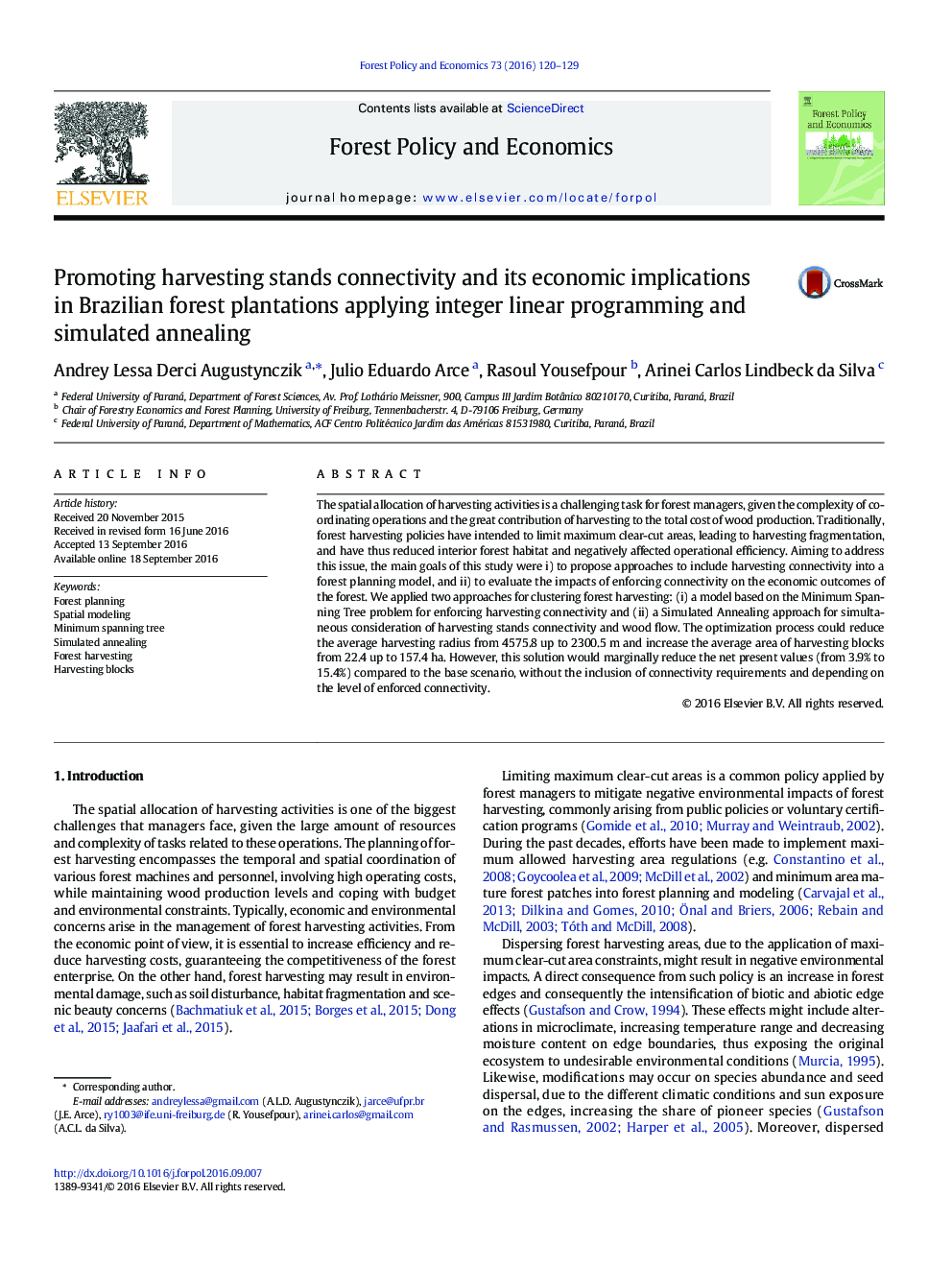| کد مقاله | کد نشریه | سال انتشار | مقاله انگلیسی | نسخه تمام متن |
|---|---|---|---|---|
| 6459831 | 1421666 | 2016 | 10 صفحه PDF | دانلود رایگان |
- We applied Simulated Annealing and a Minimum Spanning Tree model for clustering harvesting stands.
- Both approaches were capable of promoting connectivity between harvesting areas.
- Average harvesting radius and average harvesting block area improved with the inclusion of connectivity requirements.
- The approaches applied present potential for integrating environmental and economic concerns into forest planning.
The spatial allocation of harvesting activities is a challenging task for forest managers, given the complexity of coordinating operations and the great contribution of harvesting to the total cost of wood production. Traditionally, forest harvesting policies have intended to limit maximum clear-cut areas, leading to harvesting fragmentation, and have thus reduced interior forest habitat and negatively affected operational efficiency. Aiming to address this issue, the main goals of this study were i) to propose approaches to include harvesting connectivity into a forest planning model, and ii) to evaluate the impacts of enforcing connectivity on the economic outcomes of the forest. We applied two approaches for clustering forest harvesting: (i) a model based on the Minimum Spanning Tree problem for enforcing harvesting connectivity and (ii) a Simulated Annealing approach for simultaneous consideration of harvesting stands connectivity and wood flow. The optimization process could reduce the average harvesting radius from 4575.8 up to 2300.5Â m and increase the average area of harvesting blocks from 22.4 up to 157.4Â ha. However, this solution would marginally reduce the net present values (from 3.9% to 15.4%) compared to the base scenario, without the inclusion of connectivity requirements and depending on the level of enforced connectivity.
Journal: Forest Policy and Economics - Volume 73, December 2016, Pages 120-129
